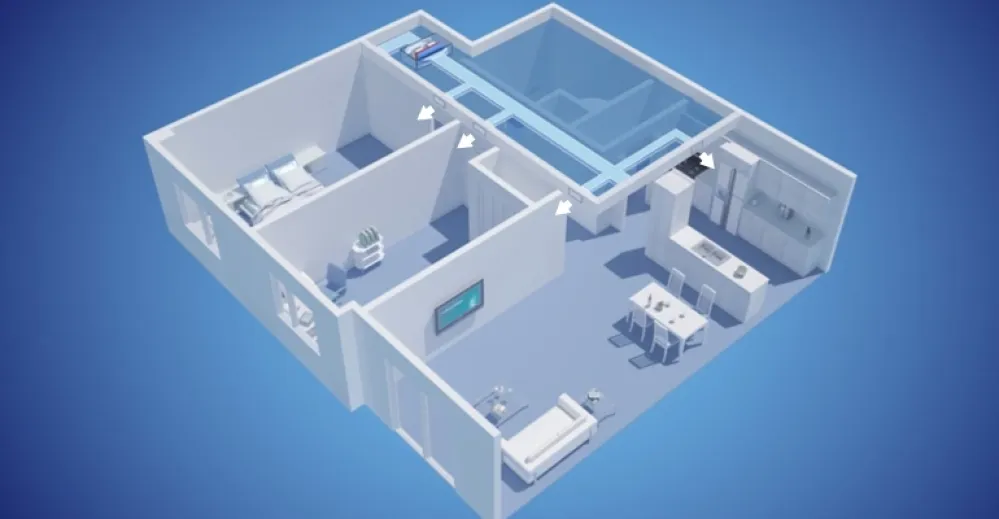
Residential heating: the era of minimalism

Why install electric baseboard heaters under each window when the whole place can be heated from a single apparatus, plus provide air conditioning? The idea is laudable, but the challenge remains to achieve a comfortable, even temperature throughout the home. This is the goal Énergir’s DATECH Group and the Natural Gas Technologies Centre (NGTC) set themselves, with the help of an innovative approach that saves on both costs and space.
The concept of “minimalist ducts” has actually been around for quite some time. Industrial and commercial buildings have been using this type of system for decades. But up to now, comfort was not the main concern. The boiler would be installed in a corner, air ducts would be connected without too much thought to their placement or configuration, and you’d end up with areas that were either too hot or too cold, from one room to another.
What’s perfectly acceptable in a manufacturing setting is less so in a residence, where you need to ensure uniform thermal comfort throughout, whether the occupant is by a window or stretched out on the sofa. This is why developers prefer to install a multitude of air vents close to openings, most often on the floor or in a false ceiling. It is a costly approach, but in the absence of anything better, it’s been the best available compromise.
Recent studies conducted by Énergir’s DATECH Group and the NGTC have just changed all that.
By testing numerous configurations in a model apartment subjected to extreme temperatures (down to -23°C), these teams demonstrated that it’s possible to achieve optimal thermal comfort by feeding warm air into each room through an air diffuser located high on the wall opposite the windows.
Defining best practices for guaranteed comfort
Ultimately, the tests performed at the NGTC made it possible to define best practices in terms of diffuser positioning, air flow and angle of discharge (i.e. the orientation of the deflectors) in order to meet the ANSI/ASHRAE55-2010 comfort standards, based on criteria of air speed, floor surface temperature, temperature stratification, temperature variations with time and radiant temperature asymmetry.
From now on, developers will know how to effectively reduce the number of heat sources. Not only can there be fewer air diffusers, but they can be grouped together at the centre of the home, thereby eliminating the need to install long duct systems. Hence, the term minimalism.
Apart from gaining in height, minimalist ducts allow you to gain more floor space. In fact, a single fan coil unit, which also doubles as an air conditioner, can be mounted in a suspended ceiling at the entrance of the home rather than needlessly taking up the space of, say, a closet.
Condo developers have already started adopting the approach recommended by Énergir’s DATECH Group and the NGTC. In addition to cost and space savings, the noise level of minimalist ducts is comparable to that of traditional systems. Same comfort, less work: minimalist ducts have simply got it all. Has the reign of electric baseboards finally come to an end?
You may also like...





